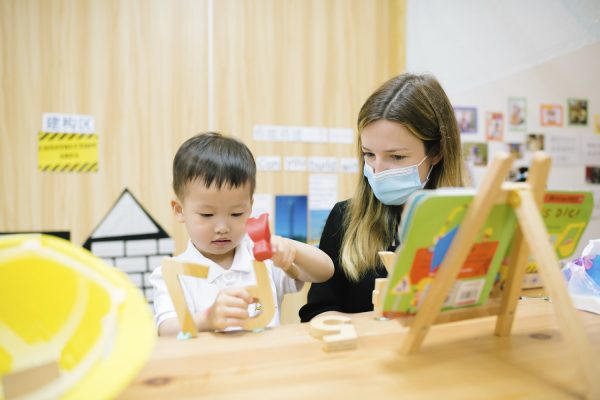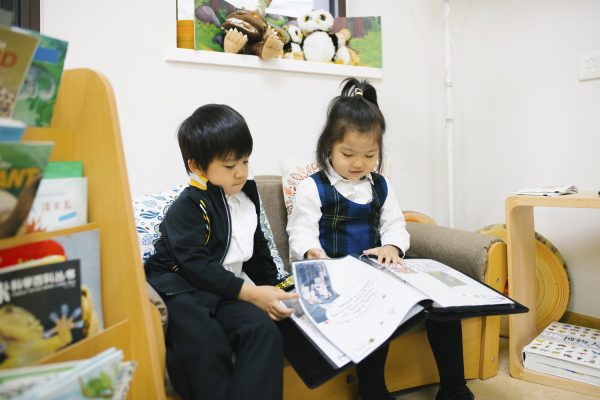
At Hiba Nursery, one of our aims is to start the pupils off on their journey to becoming confident, enthusiastic and effective communicators. As soon as the children set foot into the environment on their first day, the development of their listening, understanding and speaking skills is one of our primary focuses, alongside their personal, social, emotional and physical development.As children move through the Nursery, we begin to include a focus on their Literacy skills in both English and Chinese.

Pupils in EY3 and EY4 take part in daily Phonics sessions following the Read, Write, Inc. programme. Ruth Miskin, an experienced educator and consultant in the UK, developed the programme to enable children to not only learn the 44 sounds which make up the English language effectively, but also to develop their reading, writing and spelling skills. The programme takes a logical and consistent approach to learning; during a session the children will take part in a number of activities, usually in the same order. This allows them to become familiar with routines, transition seamlessly between groups and most importantly to become confident in their own ability. As the children have been taking part in sessions for a couple of weeks now, you may have heard them mention some of the following activities: 01. Speed sounds Every one of the sounds our pupils learn corresponds to a picture and a rhyme, which help with letter formation. During a speed sounds session, flashcards are shown to the children who in turn say the sound they can see.

The more the children see the cards, the quicker they get at matching the letters and the way they look on the page, to the way they sound when they are verbalised. 02. Fred Talk Fred the Frog plays a very important part in all of our Read, Write, Inc. sessions; he can only speak using sounds and hasn’t learnt how to read whole words yet! Fred is used to encourage our learners to sound out the words they are reading before they blend them together, for example, d – o – g , dog.

To begin with, this process can seem slow and tedious especially when the children articulate every sound they can see whilst reading a book, but this really is a fundamental skill which we cannot skip over. As our children get older the ability to segment (sound out) difficult words they have never seen before, will prove invaluable. 03. Green words and red words All of the words the children come across in their Read, Write, Inc. sessions are linked to rhymes or stories they are reading. The words are either green or red; green words are decodable (can be sounded out using Fred Talk) but red words cannot. The colours provide the children with visual cues and in turn help them to know when they need to be able to read a word by sight. 04. Story books The reading books which the children bring home are linked to their Read, Write, Inc. groups and are to support with comprehension and story telling skills. If their books contain words, pupils will be able to read most, if not all, of the words by sight, meaning they need not sound out every word they come across. This builds the children’s confidence in themselves and allows them to increase their reading fluency and think about what the words mean, rather than what they say.

Daily Phonics sessions provide our young learners with some of the building blocks they need to become confident, enthusiastic and effective communicators, but our Literacy learning does not stop there. Our environments are full of opportunities for the children to apply their skills, independently or with a little support from the adults around them. Many of our children are willing to have a go and are becoming less worried about making mistakes; all down to the fact that they really believe in their own ability. The journey to Literacy is not a race, and by teaching skills little and often we can afford our pupils the time and space to consolidate and practice what they have been learning at their own pace.